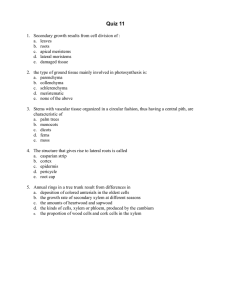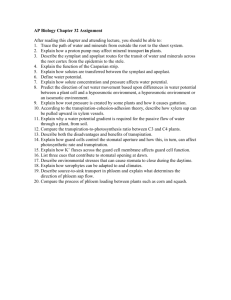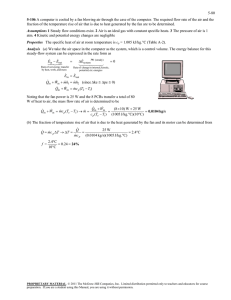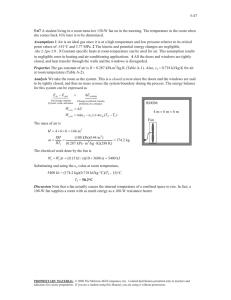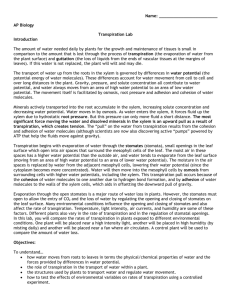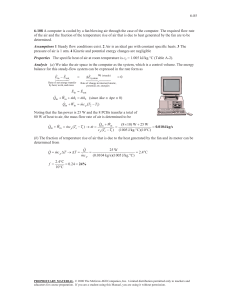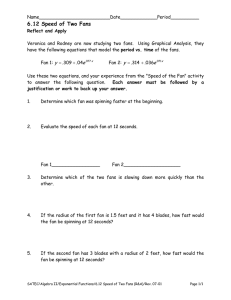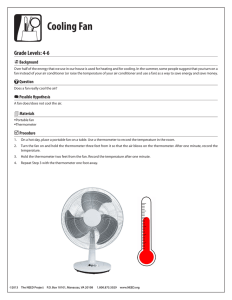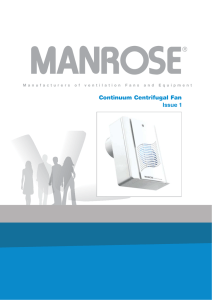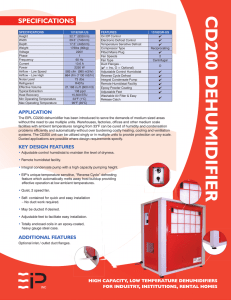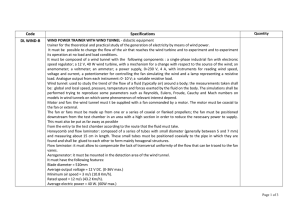AP Biology Transpiration Lab Report: Experiment & Analysis
advertisement
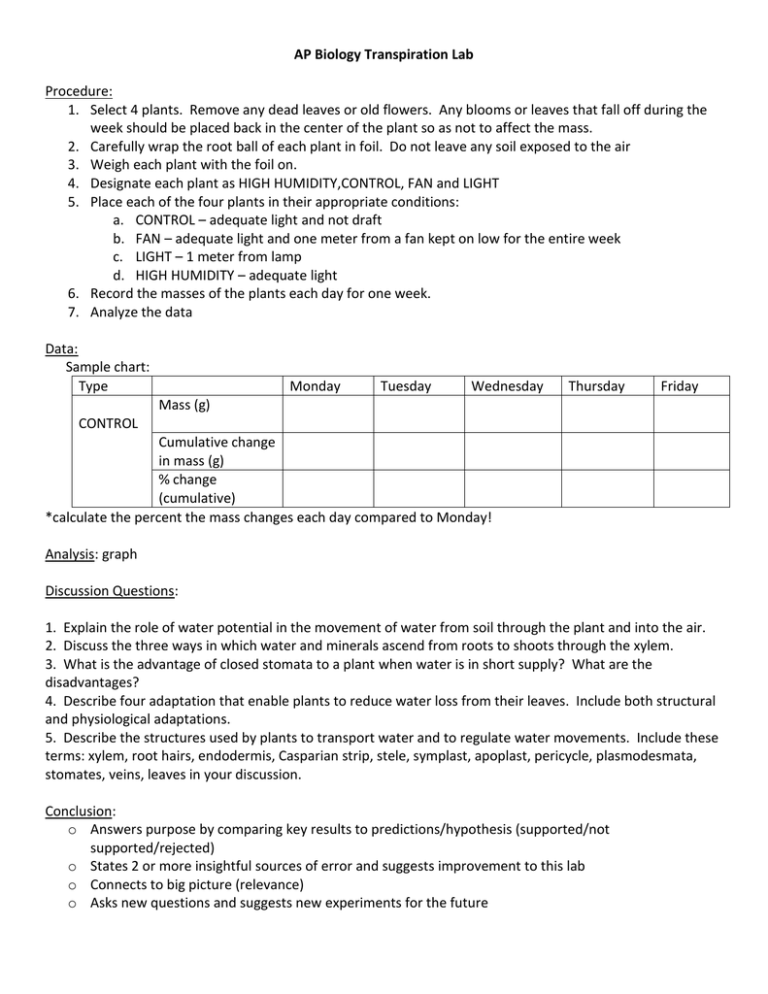
AP Biology Transpiration Lab Procedure: 1. Select 4 plants. Remove any dead leaves or old flowers. Any blooms or leaves that fall off during the week should be placed back in the center of the plant so as not to affect the mass. 2. Carefully wrap the root ball of each plant in foil. Do not leave any soil exposed to the air 3. Weigh each plant with the foil on. 4. Designate each plant as HIGH HUMIDITY,CONTROL, FAN and LIGHT 5. Place each of the four plants in their appropriate conditions: a. CONTROL – adequate light and not draft b. FAN – adequate light and one meter from a fan kept on low for the entire week c. LIGHT – 1 meter from lamp d. HIGH HUMIDITY – adequate light 6. Record the masses of the plants each day for one week. 7. Analyze the data Data: Sample chart: Type Monday Tuesday Wednesday Thursday Friday Mass (g) CONTROL Cumulative change in mass (g) % change (cumulative) *calculate the percent the mass changes each day compared to Monday! Analysis: graph Discussion Questions: 1. Explain the role of water potential in the movement of water from soil through the plant and into the air. 2. Discuss the three ways in which water and minerals ascend from roots to shoots through the xylem. 3. What is the advantage of closed stomata to a plant when water is in short supply? What are the disadvantages? 4. Describe four adaptation that enable plants to reduce water loss from their leaves. Include both structural and physiological adaptations. 5. Describe the structures used by plants to transport water and to regulate water movements. Include these terms: xylem, root hairs, endodermis, Casparian strip, stele, symplast, apoplast, pericycle, plasmodesmata, stomates, veins, leaves in your discussion. Conclusion: o Answers purpose by comparing key results to predictions/hypothesis (supported/not supported/rejected) o States 2 or more insightful sources of error and suggests improvement to this lab o Connects to big picture (relevance) o Asks new questions and suggests new experiments for the future
